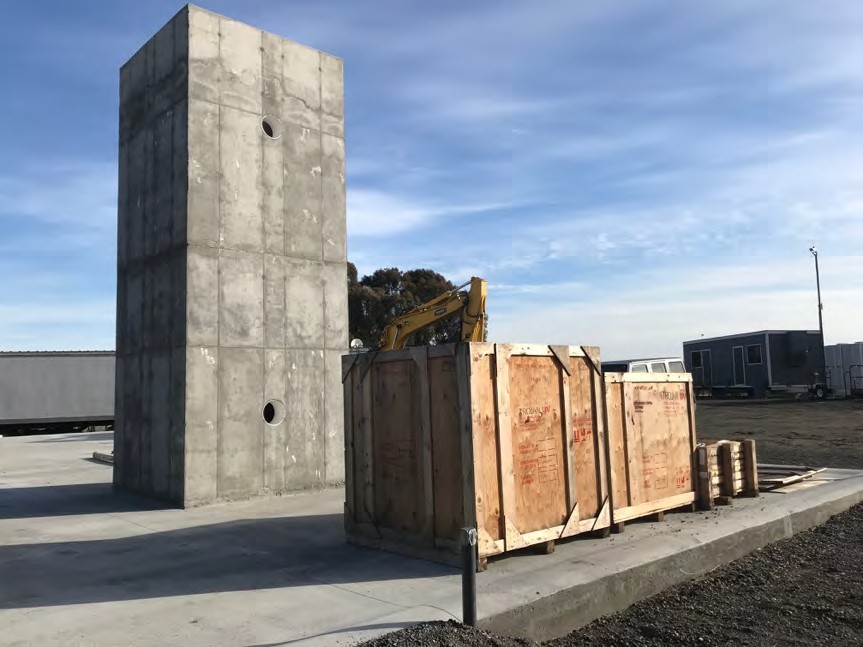Large Water-Treatment Plant Demonstrates How Anaerobic Microbes Can Save Energy
Outcome/Accomplishment
A number of public agencies and private companies have partnered to build an innovative water treatment plant in Silicon Valley, testing technology developed with support from the Engineering Research Center (ERC) for Re-Inventing the Nation's Urban Water Infrastructure, or ReNUWit, a National Science Foundation (NSF)-funded center based at Stanford University.
Impact/Benefits
Most water-treatment plants today use aerobic microbes in a process, unchanged in 100 years, that requires a remarkable 1% of the nation's energy—largely to inject oxygen to keep the microbes alive. Using anaerobic microbes, the new facility promises to consume less energy and perhaps be a net-energy producer through methane captured from the new process.
Explanation/Background
Able to process 20,000 gallons per day for non-potable uses, the new facility uses grains of activated carbon to keep the anaerobic microbes alive and membranes to clear solids from the water. The Staged Anaerobic Fluidized-Bed Membrane Bioreactor (SAF-MBR) is the world's largest test facility of its kind, and builds on knowledge gained from a ReNUWIt testbed at Stanford.
Besides the support from ReNUWIt, the facility's partners include the facility's hosts, Silicon Valley Clean Water (SVCW), as well as the Santa Clara County Water District; U.S. Bureau of Reclamation; PG&E; Suez Group; Kennedy/Jenks Consulting; Tanner Pacific; Trojan Technologies; LG NanoH20; West Yost; Brown and Caldwell; and the Water Research Foundation, among others. Funding for the four-year pilot study includes a $2 million grant from the California Energy Commission.
Location
Stanford, Californiawebsite
Start Year
Energy and Sustainability
Energy, Sustainability, and Infrastructure
Lead Institution
Core Partners
Fact Sheet
Outcome/Accomplishment
A number of public agencies and private companies have partnered to build an innovative water treatment plant in Silicon Valley, testing technology developed with support from the Engineering Research Center (ERC) for Re-Inventing the Nation's Urban Water Infrastructure, or ReNUWit, a National Science Foundation (NSF)-funded center based at Stanford University.
Location
Stanford, Californiawebsite
Start Year
Energy and Sustainability
Energy, Sustainability, and Infrastructure
Lead Institution
Core Partners
Fact Sheet
Impact/benefits
Most water-treatment plants today use aerobic microbes in a process, unchanged in 100 years, that requires a remarkable 1% of the nation's energy—largely to inject oxygen to keep the microbes alive. Using anaerobic microbes, the new facility promises to consume less energy and perhaps be a net-energy producer through methane captured from the new process.
Explanation/Background
Able to process 20,000 gallons per day for non-potable uses, the new facility uses grains of activated carbon to keep the anaerobic microbes alive and membranes to clear solids from the water. The Staged Anaerobic Fluidized-Bed Membrane Bioreactor (SAF-MBR) is the world's largest test facility of its kind, and builds on knowledge gained from a ReNUWIt testbed at Stanford.
Besides the support from ReNUWIt, the facility's partners include the facility's hosts, Silicon Valley Clean Water (SVCW), as well as the Santa Clara County Water District; U.S. Bureau of Reclamation; PG&E; Suez Group; Kennedy/Jenks Consulting; Tanner Pacific; Trojan Technologies; LG NanoH20; West Yost; Brown and Caldwell; and the Water Research Foundation, among others. Funding for the four-year pilot study includes a $2 million grant from the California Energy Commission.

